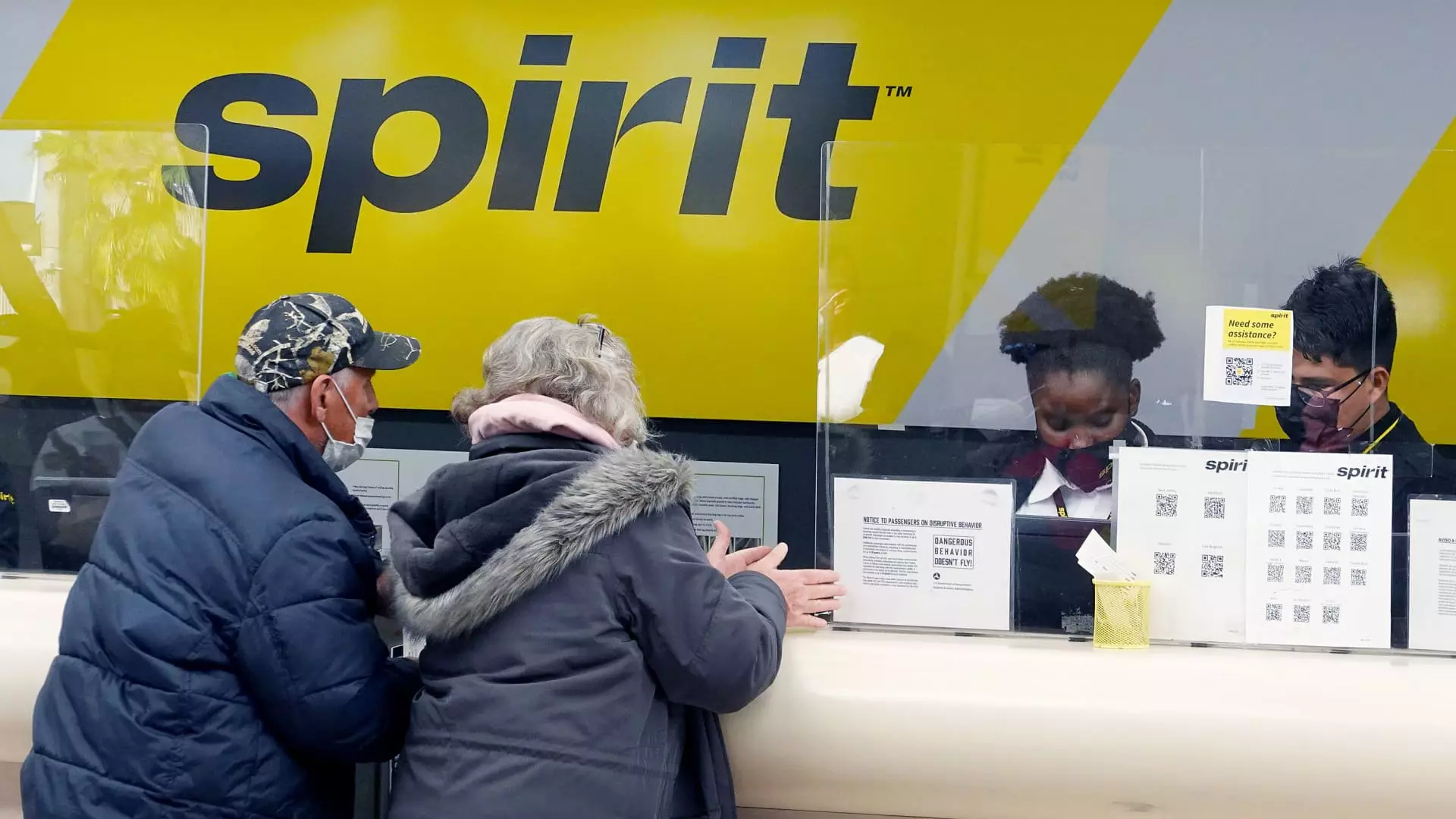Spirit Airlines, renowned for its budget-friendly fares, finds itself in a challenging position as it files for bankruptcy protection, marking a significant turning point not just for the airline but for the wider airline industry. This bankruptcy reflects years of financial struggles characterized by steep losses, a failed merger attempt, and changing consumer preferences, which collectively create a complex landscape for low-cost carriers. By seeking protection under Chapter 11, Spirit Airlines aims to restructure its debts and operations while ensuring continuity for its customers.
This filing is noteworthy as it represents the first instance of a major U.S. airline seeking Chapter 11 protection since American Airlines did so over a decade ago. This development not only affects Spirit’s operations but also signals caution for the industry as a whole. It raises concerns about the long-term viability of budget travel as consumer tastes shift and operational costs rise.
The airline industry was already grappling with a multitude of challenges before the pandemic exacerbated many issues. Spirit Airlines was notably impacted by a significant engine recall that led to the grounding of several aircraft. This was compounded by increased operational costs post-pandemic when demand rebounded faster than the industry could adapt. As the market struggled to stabilize, Spirit faced additional setbacks when a proposed merger with JetBlue was ultimately blocked by antitrust regulations, further diminishing its position.
The gravity of its financial predicament is underscored by the staggering 90% decline in its share value over the current year, coupled with a continuous cash burn that has left the company seeking shelter from its creditors. Compounding the situation, Spirit had been on the brink of renegotiating critical financial obligations, leading up to its bankruptcy filing that would shield it from immediate financial pressures.
Despite the daunting circumstances, Spirit Airlines has assured its customers that operations will continue without interruption. In a letter from CEO Ted Christie, customers were encouraged to continue making bookings and utilizing their existing tickets and loyalty points. Such communications are critical, as maintaining consumer confidence during turbulent times can significantly influence brand loyalty and future revenue streams.
The company has secured $300 million in debtor-in-possession financing, intended to facilitate its operations throughout the bankruptcy process. Moreover, vendors and aircraft lessors will remain unaffected, illustrating Spirit’s intent to stabilize its financial base without jeopardizing existing partnerships crucial for day-to-day operations.
As Spirit Airlines navigates through this turbulent phase, it is also taking measures to downsize its operations in order to remain financially viable. This includes plans to furlough additional pilots and scaling back on various routes, which are difficult decisions but necessary in the face of mounting operational costs. Analysts suggest that continued contraction may be essential for Spirit to regain a solid footing in the market.
The reduction of fleet size is already underway; Spirit has proactively sold aircraft to bolster liquidity. Notably, the sale of 23 Airbus jets yielded significant cash flow, reflecting a strategic pivot towards maintaining operational liquidity amidst a challenging market landscape where aircraft availability is currently low.
Spirit’s business model, once a beacon for budget-conscious travelers, is now being reassessed in light of recent developments. Consumers are increasingly discerning regarding value, leading to a rising expectation for amenities alongside affordable fares. Amidst this shift, Spirit has responded by introducing bundled fare options that incorporate additional benefits, such as seat assignments and extra legroom. Such steps suggest an evolution of its service offerings, aiming to cater to the changing demands of modern travelers who are willing to pay for enhanced comfort.
Hindered by a revenue dip and tougher competition, Spirit Airlines finds itself at a crossroads. The parking brake on expansion has caused concern regarding its long-term prospects in a market dominated by a few large players. The pending discussions with former merger partner Frontier may lead to renewed efforts in consolidating operations, pointing towards a potential path for recovery.
In summation, the challenges faced by Spirit Airlines amid its bankruptcy filing embody the greater complexities within the airline industry, especially for budget carriers. As it maneuvers through restructuring and operational adjustments, the future for Spirit—once a pioneering force in low-cost travel—remains uncertain but hopeful. The coming months will be telling as the industry watches closely for signs of recovery or further contraction in the budget travel sector, proving that even the most agile of players must adapt continuously in a rapidly evolving landscape.

